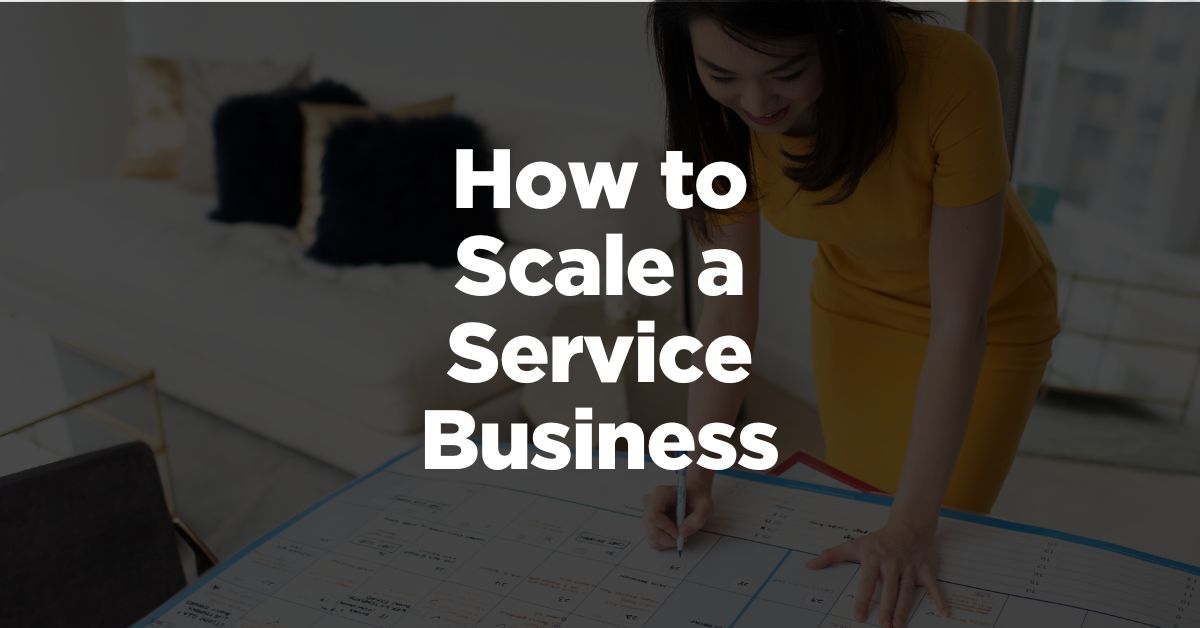Let me guess…
You want to learn how to scale a service business efficiently so you can do things like:
- Increase your revenue – without burning out
- Take time off whenever you want
- Have a bigger impact
Sound accurate? Then you’re in the right place.
I’ve used the following tips to scale my own 8-figure business, so I know they work.
Interested? Let’s dive in.
The 10 steps for scaling your service business are:
2. Scale your customer experience
6. Keep track of profitability
7. Optimize your pricing strategy
9. Scale your marketing strategy
10. Build a sustainable sales system
The 4-Step Automatic Attraction System
for attracting more clients daily... without paid ads, social media, or "hustle"!
What does it mean to scale your service business?
Scaling means that you increase your business income and operations – without having to increase the time you spend working to match.
And this is the key difference between just growing your service business and scaling it:
If you’re just growing, you might be increasing your working hours proportionally – and end up with a similar profit margin.
Because if you double your output but also double the time you spend working, you might be growing, but… you aren’t scaling.
On the other hand, scaling helps you boost your revenue, while keeping your services consistent and business efficient.
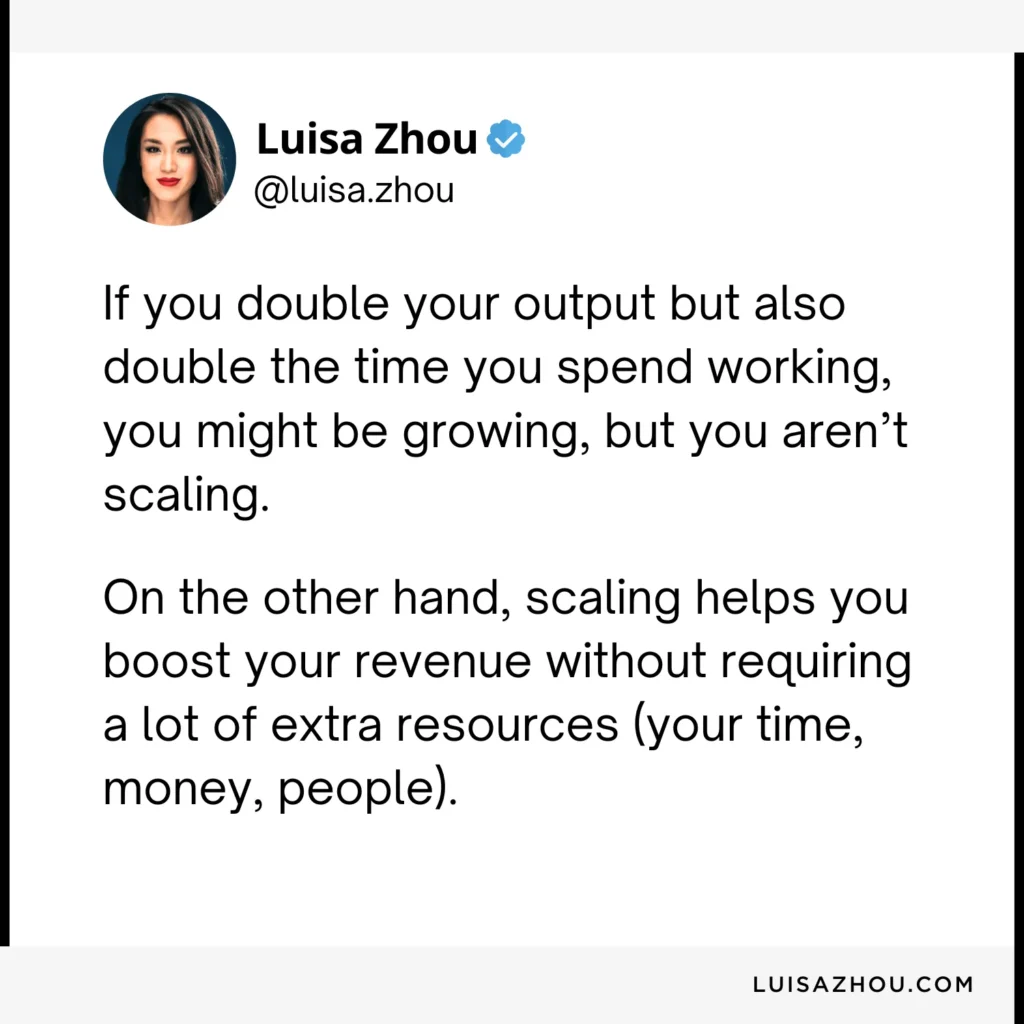
However, plenty of businesses never scale. In fact, only 22% of businesses manage to scale.
And scaling a service business comes with its own challenges.
How do you multiply yourself to provide your service?
That’s something I used to grapple with.
But after having scaled my business to $10+ million (these days I only work on it a few hours a week) and helped multiple clients scale their businesses to multiple six and seven figures, I know there are some very specific steps you need to take to scale successfully.
I explain what it means to scale a business here:
Now, scaling starts with knowing the right time to scale.
When should you scale your service business?
To scale successfully, timing is important. If you try to scale without having built a solid foundation first, you’ll risk not getting great results.
So, before starting, you should have consistent income and the funds to invest in what you’ll need.
Generally, that means surpassing six figures in revenue.
You also need to have:
- A strong brand
- A clear customer persona
- A vision of where you want to go
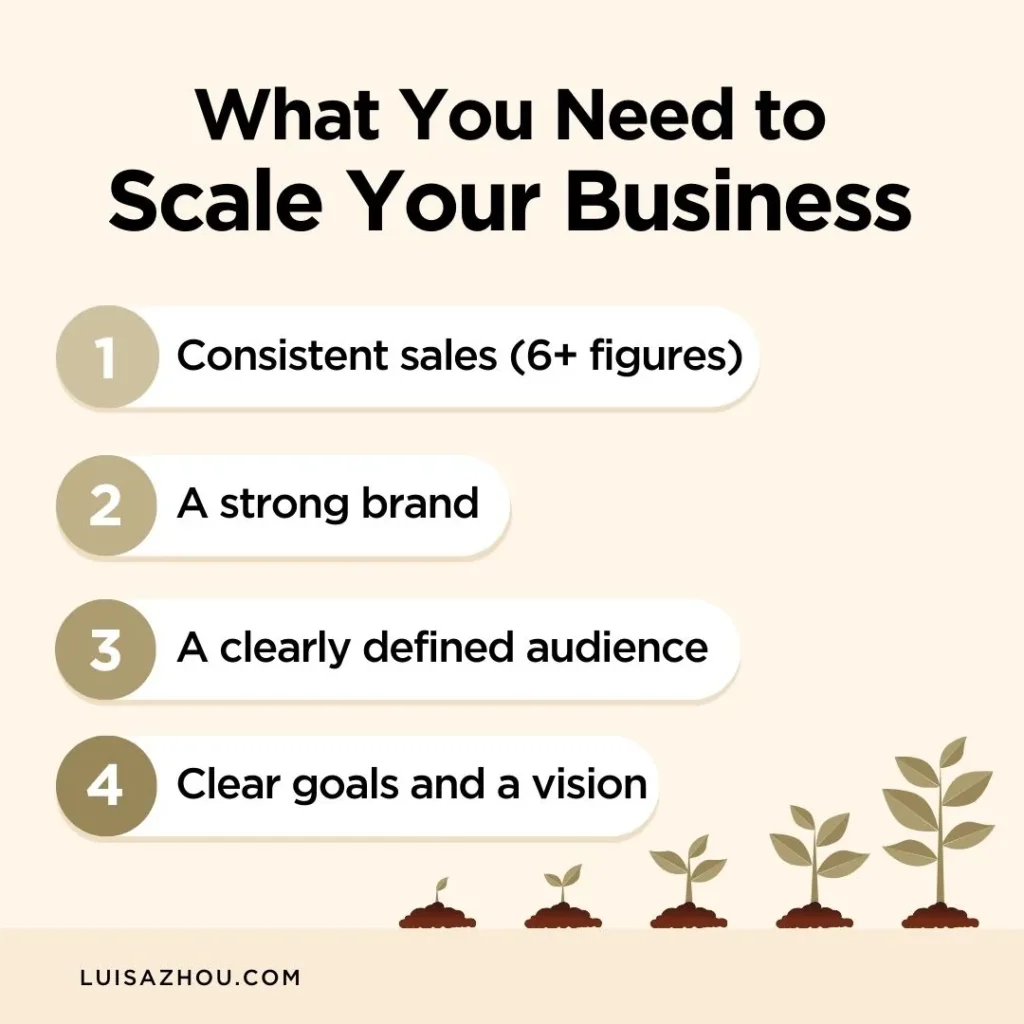
Once you have enough revenue, here are three things to find out:
- Your conversion rate: The percentage of people who buy after going through your sales funnel.
- Your cost per lead: How much each lead costs you.
- Your sales cycle: How long it takes someone to decide to buy from you.
When you know your numbers, your business becomes more predictable and you’re ready to scale.
Alright, now that you know where to start, let’s get into the tips.
Top 10 tips to scale a service business
What are the best ways to scale?
These are the steps you need to take:
Hire the right team
Listen:
Having a team is key to scaling long-term.
You can (and should) use tech to automate mundane tasks.
But your growth will plateau if you don’t start outsourcing.
The reason is this:
If your entire business runs thanks to you, that means you’re spending time on things that you could pay other people to do.
If you want to scale, you shouldn’t be in charge of everything yourself.
Make sure that your business operates thanks to several people working together, not just one (whether that’s you or a VA).
To speed up in the long term, slow down and build a solid foundation first.
Ultimately, focus on the aspects of growing your business that only you can do, like your long-term vision, and outsource the rest.
For example, the first thing I outsourced was customer service, which helped free up my time.
As a business owner, make it a habit to ask yourself, “Could I hire someone else to do this?”

Often, the answer will be yes.
In my business, we operate like an assembly line:
My team members know what they have to do and when, and everything is broken down into steps. The result? Smooth operations that require minimal involvement on my part.
Thanks to my team, I can focus on things only I can do, like record YouTube content, and my team takes care of everything else.
Ultimately, we scale faster because we’re all focused on what we do best.
So, yes: Getting a team together is essential if you want to scale. For this step, check Upwork or use job boards to get top talent.
To find contractors on Upwork:
Search for the role you want to fill.
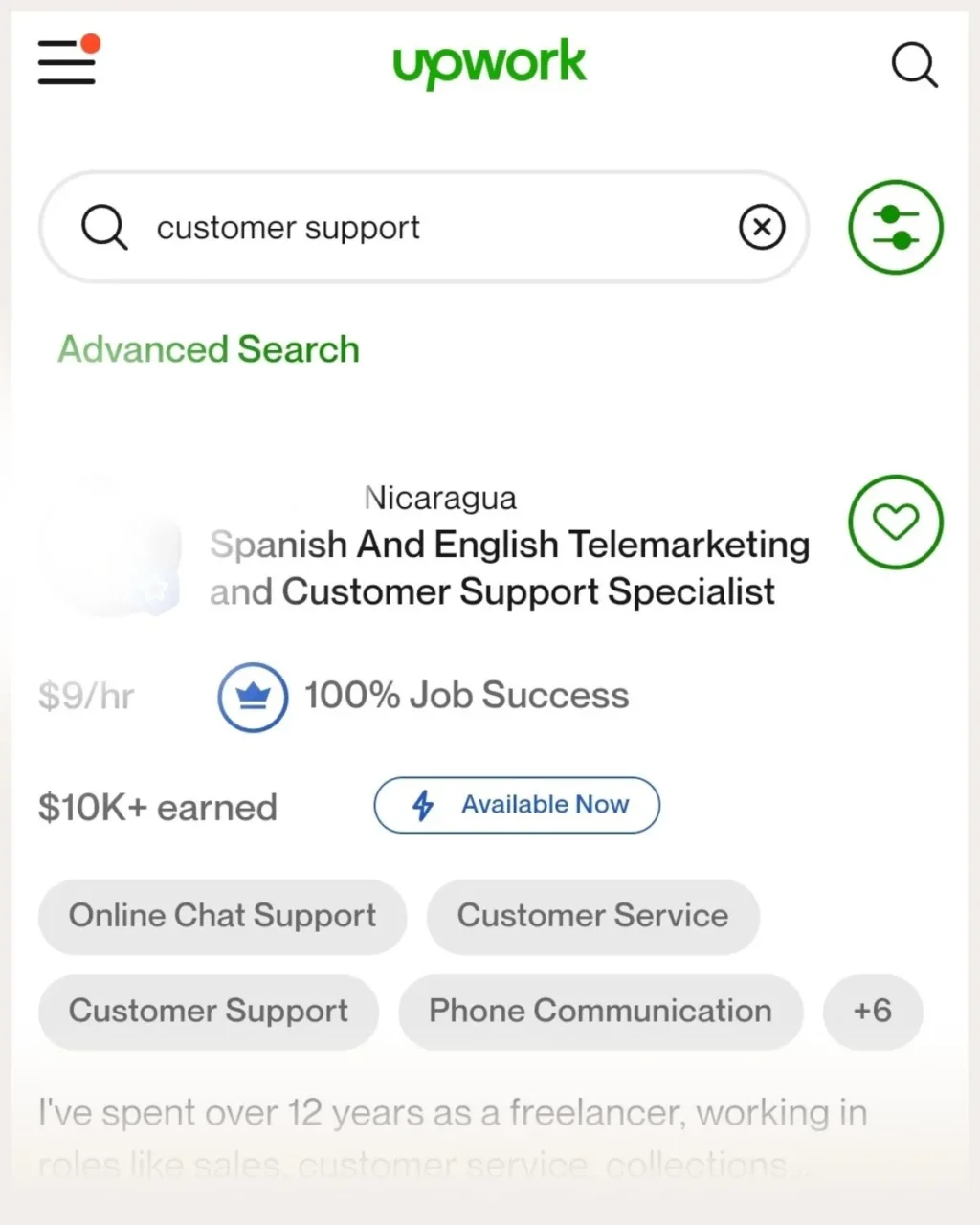
Use filters to narrow your search results.
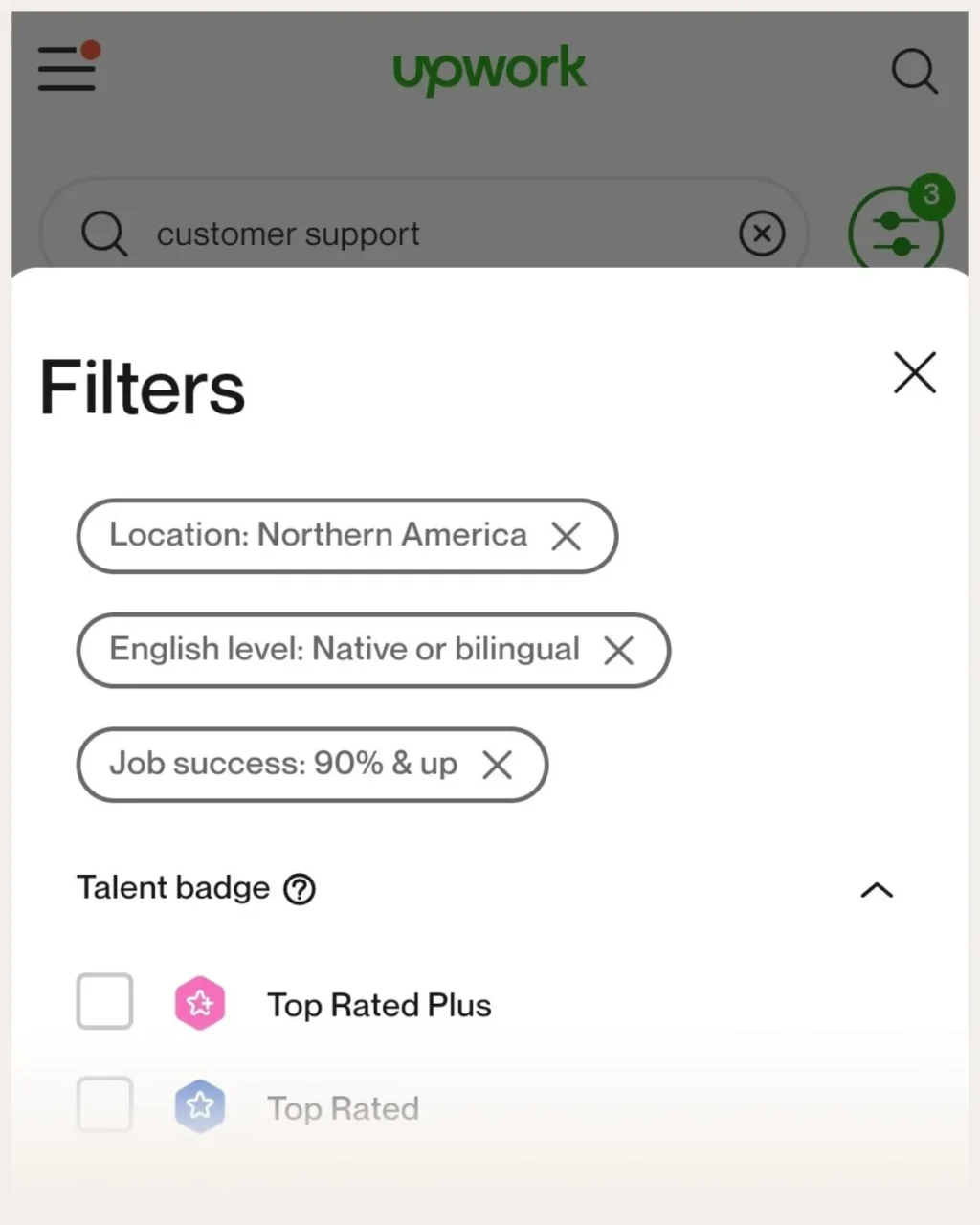
Reach out to freelancers you want to hire and ask them to do a short, paid task and, if necessary, hop on a short interview to find the right person for your role.
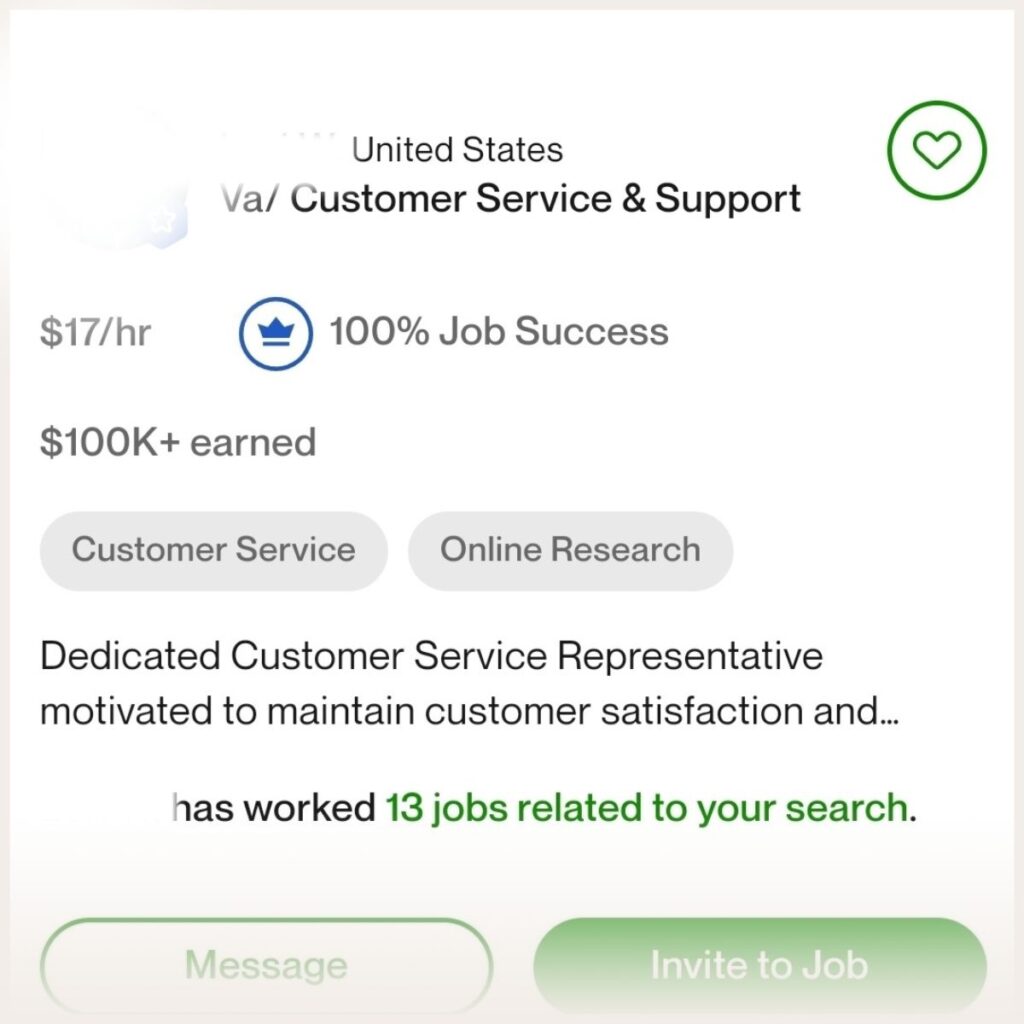
Action steps:
✅ Figure out what tasks you can outsource
✅ Find people on Upwork (or other platforms)
Scale the customer experience
Make sure that as you scale your business, you keep the customer experience consistent. This is important because ultimately, happy clients are a key to scaling your operations.
How key?
According to a recent study, clients are 3.5 times more likely to become repeat customers if they have a good customer experience.
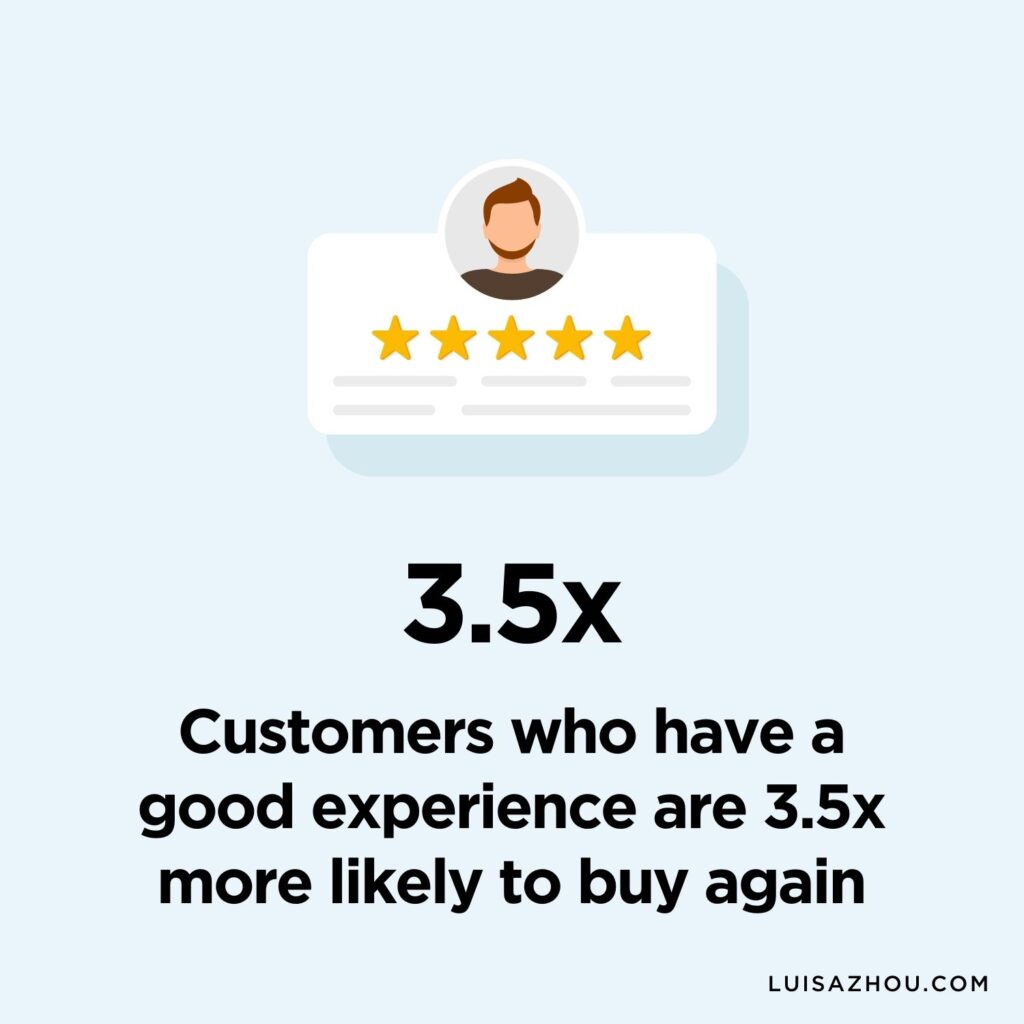
But how do you scale your service delivery or customer support, though?
Using SOPs (standard operating procedures) and training materials, put together guidelines as a framework that others can use to offer the same great service.
Wondering what this looks like in practice?
Here’s an example:
Let’s say you run a health coaching business that you want to scale. You can’t duplicate yourself, so you need to train other coaches to coach like you if you want to scale the coaching service part of your business.
In that case, you would create SOPs to show coaches you hire how to coach like you.
Like this:
During a first client call, they should talk about [blank].
During a second call, they should be ready to answer questions about [blank], and so on.
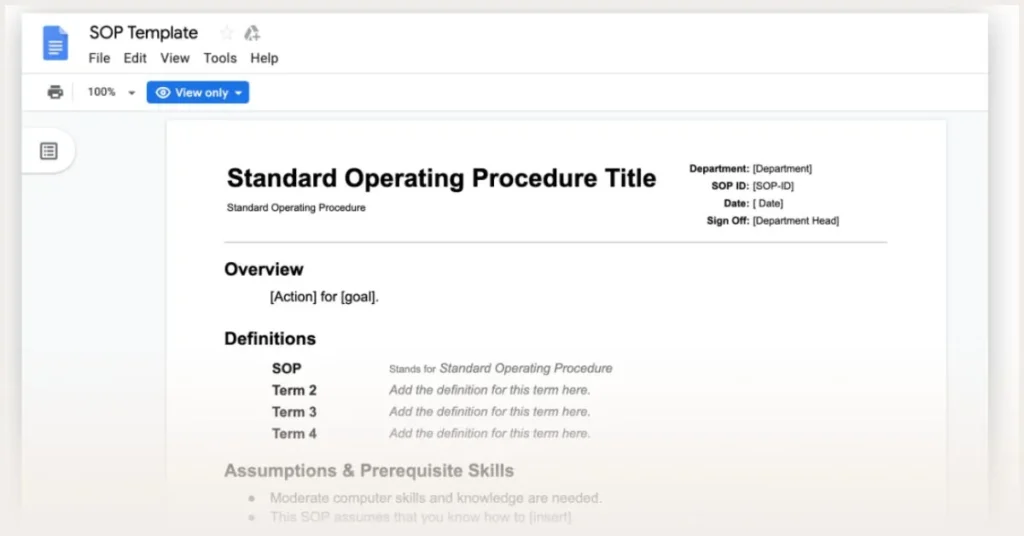
And here’s the thing…
Having SOPs doesn’t eliminate creativity. It just creates a solid foundation that anyone can use to build on.
Action steps:
✅ Map out all the different parts of your services that you’ll train others to do for you
✅ Create SOPs for all your service processes
Use systems and automation
To scale your business, you need to create systems that can give you the freedom to step away – and still grow.
Keep in mind: Your business shouldn’t depend on you or anyone else to run. Having systems means you know exactly what needs to be done and can find people to fill those roles.
This goes into what we talked about in the previous step. Create processes and standard operating procedures for all the tasks your business depends on.
Here are a few examples of things you could systematize:
- Lead generation
- Marketing
- Outsourcing
You can start with the five most common things you work on in your business. For example, customer support and posting social media posts.
Create processes for those so that you or someone on your team will get those tasks done in the same way.
I talk more about systems in this video:
You can also use tech tools to automate certain tasks.
For example:
If you’re looking to systematize your sales process, you might create a funnel and a webinar that streamlines your sales without requiring you to personally get on a call with every potential customer.
Other tools include:
- Calendly automates call scheduling
- Zoho Invoice automates invoicing
- Stripe automates your payments
- Quickbooks automates bookkeeping
- Mailchimp automates email marketing
Action steps:
✅ Choose the five most common things you work on in your business to systematize them
✅ Map out tasks in your business that can be automated with tools
Package your service as a product
Selling hourly or tailored services isn’t scalable.
Instead, create productized services.
In other words:
Your clients should be able to buy your offer and know that it’s going to help them reach a specific goal they have.
Your package achieves that by having a clear goal, including a certain amount of work and having a specific timeframe.
So, if you offer leadership consulting, create a package that speaks to a result they want, like improving their leadership skills within X amount of time.
If you’re a copywriter, it’s the same deal:
Choose a pain point you can solve, like low landing page conversion rates, and package your service as a product that solves their problem.
Wondering why a package makes more sense than working per hour?
There are a few reasons…
For one thing, people want results. They don’t care how much time you spend helping them as long as they reach their goals. By packaging your offer, they’ll know what to expect – and when.
On the flip side, charging per hour leaves them (and you) in the dark about how much the service will cost.
But packages are also highly scalable.
As you get better at what you do, you’ll be able to increase your efficiency so you can work less.
Other options to scale your service business are group coaching or consulting programs or online courses.
Courses and programs are very scalable because whether you have 10 signups or 1,000, you won’t have to increase your workload to match.
For example, if you’re a social media manager, you could create a course to teach people how to scale their Instagram from 0 to 10K in X amount of time.
I do this myself.
For example, I packaged my coaching services into my self-study course Employee to Entrepreneur program. This program contains everything people need to start their own business from scratch.
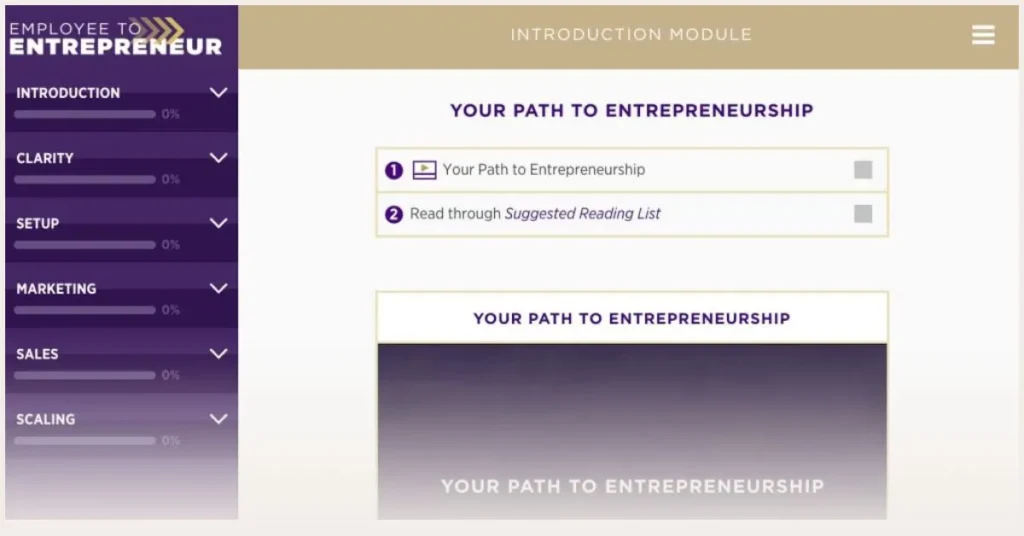
At times, I’ve also offered that program as a group coaching program with several hundreds of attendees.
Action steps:
✅ Choose what result your package helps solve
✅ Create a package around that solution
✅ Create group programs and online courses
Become the best in your niche
Before you start scaling your business, become the industry “go-to” first.
Here’s how:
- Pick a niche
- Build a reputation for great service within that niche
- Use testimonials as social proof that you can deliver (to ask for testimonials, read my guide here)
Not sure if you have a niche yet?
Ask yourself this: “Does my business serve a specific market segment?”
For example, let’s say you’re a health coach who helps people get in shape in middle age.
In that case, you’ve got a niche: Rather than trying to appeal to everyone, you focus on one smaller audience.
Take this business, which has packaged its services and helps people build tiny homes:

If you don’t have a defined niche yet, think about a hole in the market you could fill based on your skills, experience, and so on.
Choose a niche with a demand for what you offer in a market that isn’t already oversaturated:
And once you know what your niche is?
Focus on ONE offer at a time.
If you do too much, too soon, you’ll spread yourself too thin and won’t be able to scale efficiently.
Remember: If you’re already at six figures, what you ALREADY offer is valuable. Focus on making your current offer better rather than expanding too soon.
Action steps:
✅ Define your niche
✅ Deliver your services and help people get results
✅ Ask for testimonials
Focus on profitability
As you scale, be as efficient as possible to maximize your profit margin.
After all, you’re running a business, not a non-profit. Which means? You can earn more money AND have a big impact – without having to pick one.
With your service-based businesses, you’ll want to aim for profit margins of at least 50%. But if you’re a coach or freelancer, you can have an even bigger ROI thanks to lower overhead costs.
For example, let’s say you’re a relationship coach who works from home.
In that case, you can avoid a lot of common business expenses, like renting office space, which will directly contribute to a higher bottom line.
That’s how I run my business: With my virtual team of contractors, we scale while keeping overhead costs low. It’s a win-win.
To calculate your gross profit income, use this formula:
((Gross income – cost of services) / Gross income) x 100 = Gross profit income
And if you’re curious to know what the baseline is for a lot of industries, take a look at this list by NYU Stern.
The 4-Step Automatic Attraction System
for attracting more clients daily... without paid ads, social media, or "hustle"!
Action steps:
✅ Calculate your gross profit income
✅ Go through your expenses to figure out if there are unnecessary costs
Optimize your pricing strategy
What’s a scalable pricing strategy?
Believe it or not, undercharging can lead to fewer sales, not more.
People tend to see more value in pricier products and services.
I’ve seen it firsthand – it’s equally hard to sell a $100 product as it is to sell a $2,000 product.
Plus, charging higher rates will help you create better systems and outsource more, which will help you scale more – without working more.
Not sure how to set your rate?
- Set your rate as a freelancer
- Set your rate as a coach or consultant
- Set your rate as a service-based business
For example, I usually recommend that new coaches and consultants offer a 3-month package for $1,500.
And after they have a few testimonials, they can move to a price that feels good to them.
Here, I share more on how to raise your prices:
Action steps:
✅ Research your industry to understand the pricing structure
✅ Decide on a competitive price
Build partnership or affiliate programs
Having partners or affiliates can be a goldmine for getting referrals and sales.
For example, find a business that offers a complimentary service to yours and partner with them to cross-promote your respective offers.
If you’re a graphic designer, you could partner with a copywriter. And that way, you’d each benefit.
Another way to scale is to use affiliates, where an affiliate promotes your business in exchange for a cut of the profits (usually 10%) for every successful referral.
You need the right partners, though.
Look at other service providers who you trust and who have the right type of audience.
And if you don’t know of anyone like that, you can do a simple Google search, comb through LinkedIn, or other social media groups.
Action steps:
✅ Research potential partners and affiliates in your industry
✅ Reach out to them to suggest a partnership
Scale your marketing strategy
To scale your business, you need to use the right strategies.
The first step is to master the strategies you already use and scale them.
That’s what I did when I first started out – I focused on one platform (Facebook) and scaled with paid ads, groups, and livestreams.
It wasn’t until several years into my business that I started implementing other strategies (like search engine optimization).
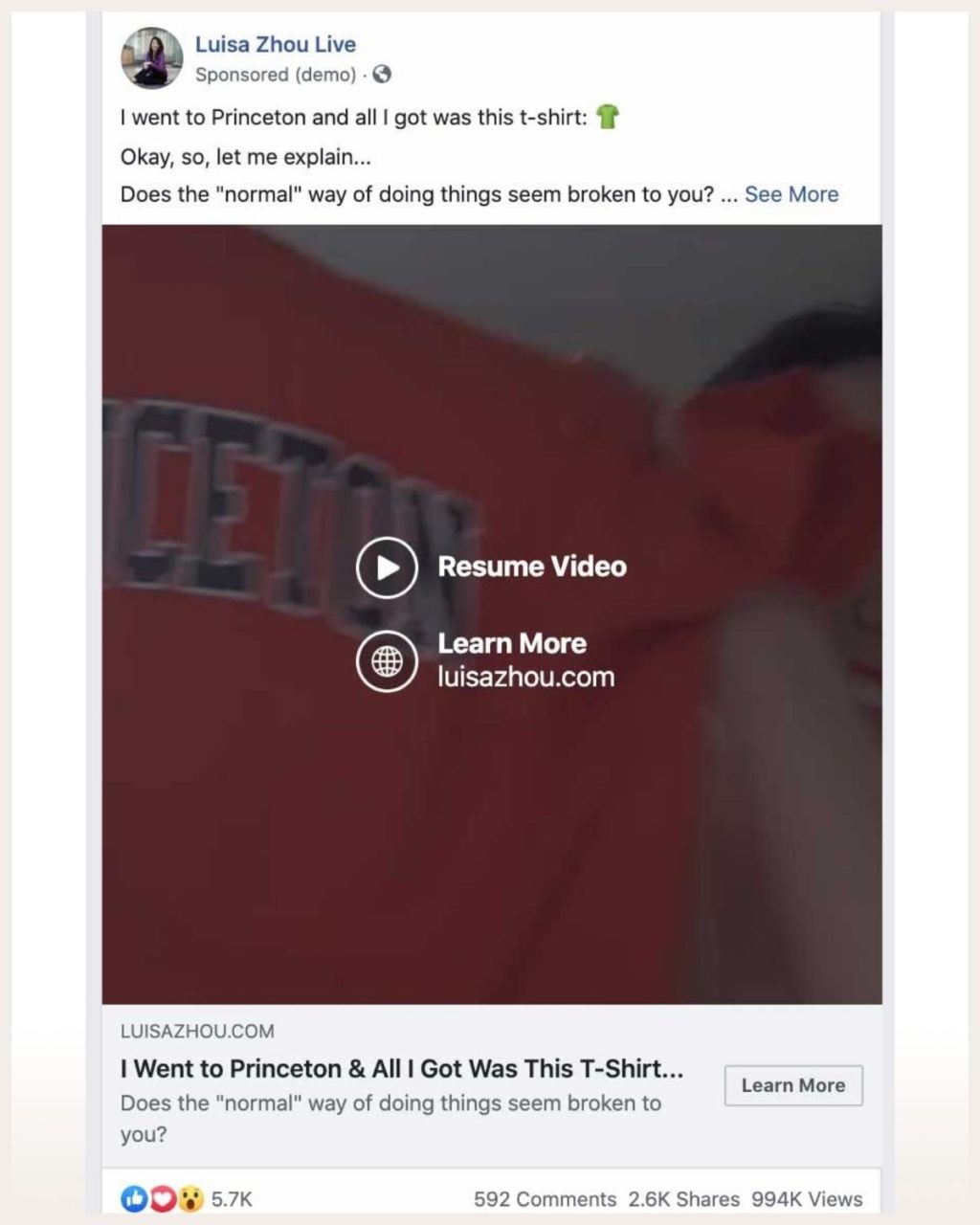
So look at what’s already working in your business and grow those as much as you can.
For example, that could be using email marketing and sharing content on a platform.
Eventually, you can add strategies like SEO or paid ads to the mix, but don’t take on too much all at once. Again, focus on getting good at one strategy before you move on to the next.
Wondering what makes a strategy good?
If you can outsource it easily and it will help you scale long-term, you’re on the right track.
Action steps:
✅ Identify the strategy that brings in the most sales and double down on that
✅ Add on other strategies when you’ve fully mastered that platform
Build a sustainable sales system
Think about this: Would you rather have a business that simply generates a lot of revenue or a business that offers a profitable bottom line?
Because the key to successfully scaling a business is to grow sustainably.
How?
Build a system for getting consistent sales, and choose a traffic source that you can use to drive traffic to your offer.
Remember: You can have the best offer in the world, but if no one knows about it, what’s the point?
Sales system
First, you want a sales system.
Here, you need an automated sales mechanism.
For that, there are all sorts of things you could use: Challenges, short video sequences that solve specific pain points, special offers, and so on.
I prefer webinars for automating sales.
For one thing, they’re valuable to my target audience, which makes signing up a no-brainer.
And second, I can reuse my webinars over and over to get more sales – without having to keep coming up with new content all the time.
You need to get consistent traffic to your sales system for it to work.
Again, to take your business to the next step, that’s exactly the kind of system you want to have.
Traffic system
Here are a few ways you can drive traffic. I recommend picking ONE of these rather than trying all of them. That way, it’ll reduce your overwhelm and help you stay focused:
- Paid traffic (in my experience, Facebook and YouTube ads work particularly well)
- Organic traffic through SEO (and I’ll talk about this more in a bit)
- Social media
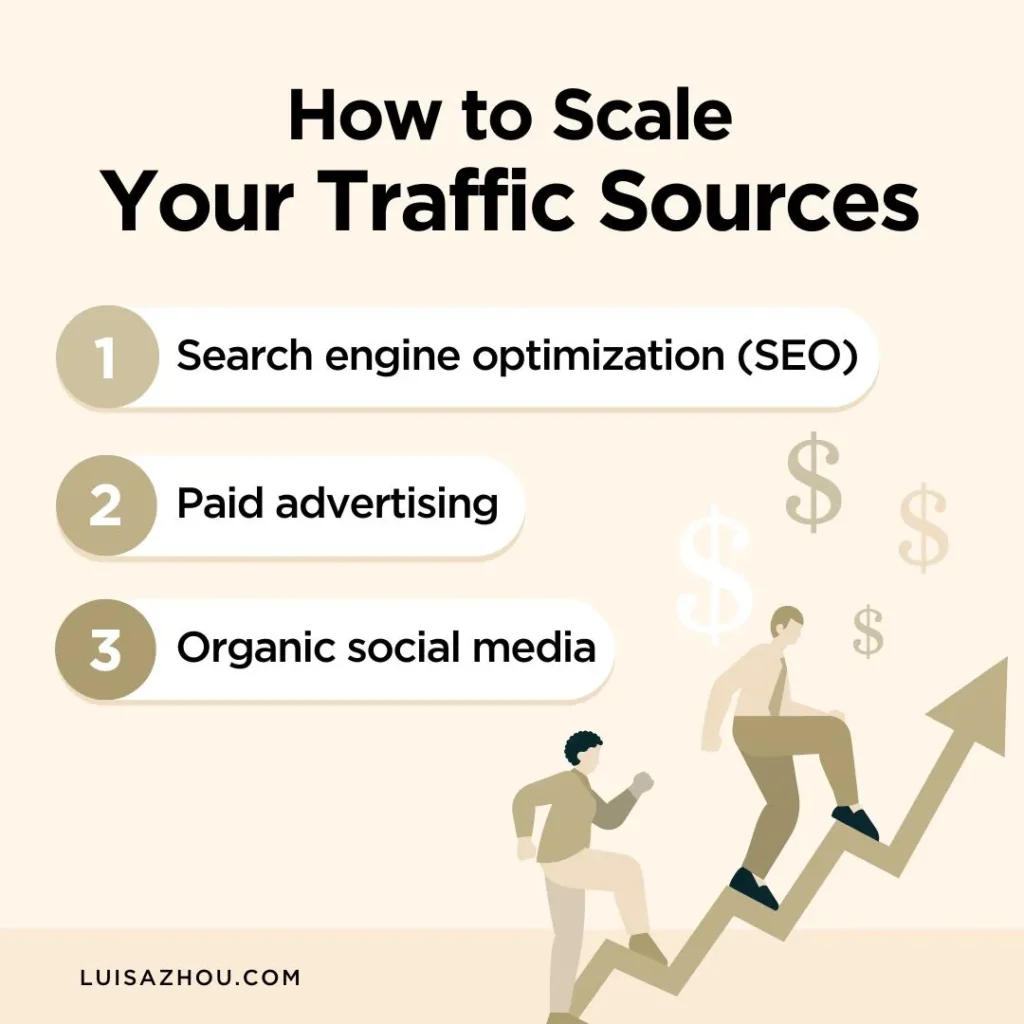
As you’re deciding which traffic source to choose, think about this: Your goal is to drive traffic to your offer in a way that will allow you to scale sustainably – without having to micromanage everything all the time.
So, for example, I used to be active on Instagram.
The problem?
It just didn’t feel right. And because I felt I needed to be present on Instagram myself to get results, it wasn’t something I could fully outsource.
That’s why I decided to quit Instagram and focus on another platform.
Bottom line, here: I recommend investing in traffic sources that you can hire other people to manage for you.
And for that, SEO and paid ads are ideal: They won’t eat up your time, and they’ll help you scale long-term.
SEO is particularly valuable because it’s incredibly scalable. Unlike paid traffic, you don’t pay for each site visitor you get.
Instead, people find you through organic searches. And as you scale and become an authority in your niche, your organic traffic will grow.
To learn how to use SEO, read my full guide here.
Action steps:
✅ Build a sales system that automates your sales
✅ Build a scalable traffic source that automates lead generation
Next steps
The 4-Step Automatic Attraction System
for attracting more clients daily... without paid ads, social media, or "hustle"!
There you have it!
Now you know ten ways to scale a service business effectively. If you’re serious about scaling so you can work less while earning more, start here.
But… maybe you could use more guidance from someone who’s been there, done that.
Sound like you?
I’ve got you covered.
Get my FREE PDF that shows you the four steps to getting clients automatically…every day.
Read more:
How to Run a Successful Business
The Best Service Business Ideas
How to Build an Evergreen Sales Funnel
How to Scale Your Coaching Business
